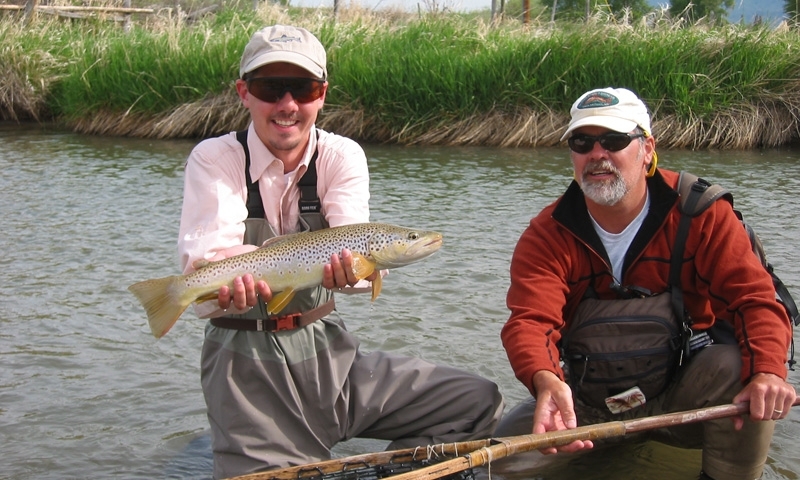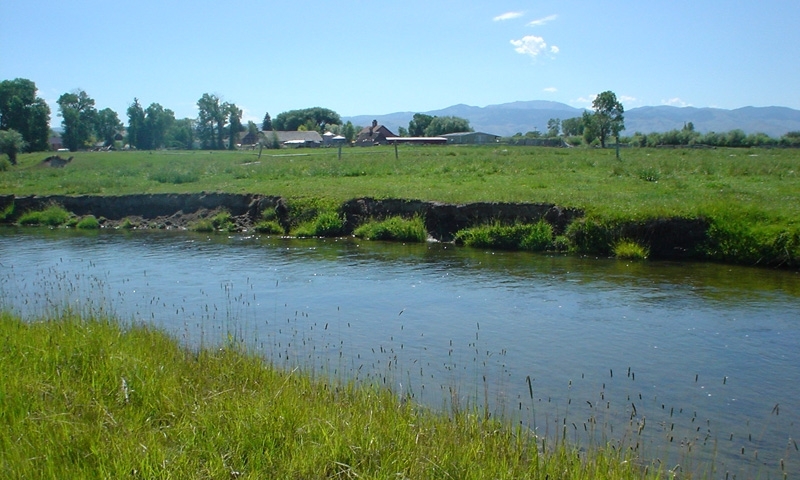- West of Bozeman and Ennis, the Ruby River begins in the Beaverhead National Forest.
- The Ruby River is best fished by foot.
Where is the Ruby River?
The Ruby River begins its 103-mile journey as a freestone river. Its headwaters are the West Fork of the Ruby, originating from the Snowcrest Range, and the East Fork of the Ruby, from the Gravelly Range in southwestern Montana. The Ruby then flows north and is joined by Coal and Ledford Creeks before empting into the Ruby Reservoir. Its tail water section begins below the Ruby Dam near the town of Alder.
Flowing northwest the Ruby River is flanked on the west by the Ruby Range and on the east by the Tobacco Root Mountains. The Ruby River provides irrigation water to its mainly agriculturally based communities in the Ruby Valley. Feeding its lower reaches are Alder Gulch Creek where gold was discovered in 1863, as well as Clear Creek, Silver Spring and Mill Creek near the town of Sheridan. The Ruby then joins the Beaverhead River 2 miles south of Twin Bridges. After 1.5 miles, the Beaverhead merges with the Big Hole River to form the Jefferson River.
What can I do and see along the Ruby River?
Fishing
Above the Ruby Reservoir the Ruby River is a small freestone river characterized by short riffled corners and pools with large boulders and pocket water. The Ruby River is predominantly a rainbow and cutthroat fishery with a healthy population of Fluvial Arctic Grayling thanks to efforts by Montana Fish, Wildlife and Parks to reestablish this endangered species to their native headwaters.
- Season: Once spring runoff has subsided, the upper Ruby offers the venturing angler fantastic dry fly fishing, incredible scenery, and wonderful solitude.
- Flies: Fly selection for the upper Ruby needn't be complicated. Try attractors like a Royal Wulff or Yellow Stimulator and if the fish aren't cooperating tie on a beadhead Prince dropper. Below the dam try nymphing a two fly rig with a Pheasant Tail and Serendipity in a sizes #14-#18. Try Mother's Day Caddis in May, PMD's and Yellow Sallies in June and July. The first few cool nights in August bring Trico's and Baetis but the main act is hoppers in the afternoon. Try a size #8 or #10 Parachute Hopper in tan or yellow. October finds the Ruby's riffles alive with spawning browns eager to chase streamers, try a JJ Special or Cone-head Bow River 'Bugger in black, olive or my favorite - white!
- Access: The Ruby has several fishing access points between the dam and the town of Sheridan and is best accessed by foot. You should know the Montana Stream Access Laws before you go.
Floating
The Ruby River is listed as a Class I river for those considering floating. Note that there aren't any boat ramps to launch a traditional watercraft and navigating the numerous diversions and barbwire fences can be difficult and downright hazardous.
Hiking
Follow the Snowcrest Trail up a series of switch-backs from the Romy Creek Trailhead on Lewis Creek Road to the top of Snowcrest Mountain.
History
Henry Plummer's notorious Road Agents used the Robber's Roost in Laurin along the Ruby as their hideout to rob gold shipments from Virginia City destined for Bannack. Learn more at the Robbers Roost Historical Marker along the way. Also make some to visit historic Virginia City.
Camping
Take your pick from a handful of campgrounds near the Ruby.
- Vigilante Cabin: Call (406)682-4253
- Ruby Reservoir: Call (406)683-8000









